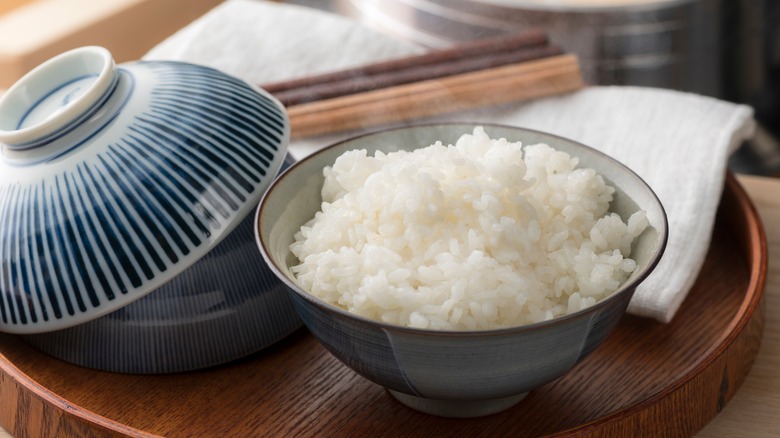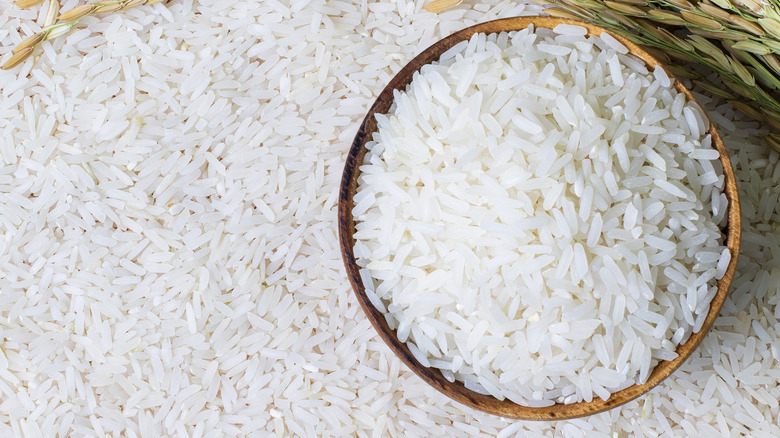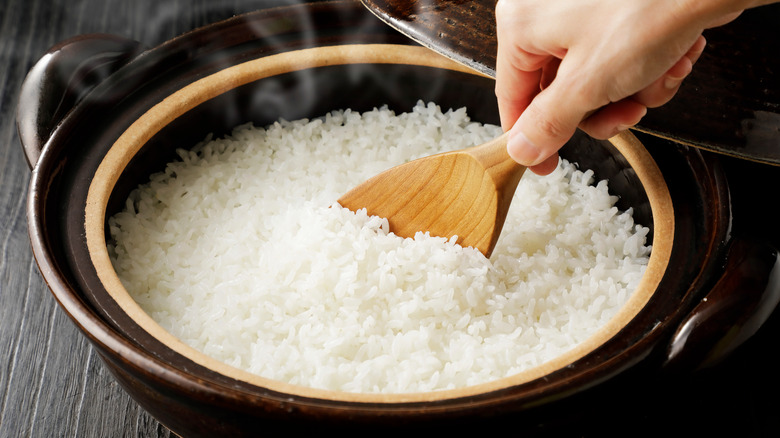Is It Safe To Can Cooked Rice At Home?
Canning is an excellent way to extend a food's shelf life. Canned tomato sauce, for example, can be easily created through a boiling process, though not every food is so straightforward. The process of canning involves simply adding food to a can, then using a heat element (often boiling water or a pressure cooker) to remove any bacteria from the food while also sealing the jar in such a way that bacteria can't grow.
A water bath canner is arguably the easiest method because it just involves steeping the cans in boiling water. However, other foods require a more intense canning process, such as being pressure cooked, while more still require something even heavier duty that, for all intents and purposes, can't be done at home. Indeed, those who love rice might be disappointed to know that its canning process is especially complex and risky — so much so it should almost certainly not be done at home.
It isn't safe to can rice at home
Rice is a more complex food than you might think, and there's a good reason you hardly ever see it sold cooked and canned. Rice is a starch, and starchy foods don't can well because that starch actually hinders the heat's ability to reach the jar's center; as a result, the heat is not transferred properly, and it would not kill enough of the bacteria to prevent canned rice from becoming harmful to eat. Rice, like other starches, also holds moisture, which facilitates mold growth and makes it hard for a can to properly seal.
If you attempt to can rice and it doesn't work properly, and you unknowingly consume it, you put yourself at a great risk of food poisoning. The same goes for other starchy products, such as pasta or noodles. Other foods that should never be canned at home include dairy products, eggs, and oils.
Leftover rice can be dangerous, too
A little-known fact about rice: you should be extremely careful about eating leftover rice in order to avoid food poisoning. That's because rice often contains a bacteria known as Bacillus cereus, which can multiply quickly the longer rice is left at room temperature.
Make sure to always cook rice properly (that is, according to its package instructions), so as to minimize the risk of bacterial growth. From there, cool it quickly. The best way to do this is the put it in a shallow bowl (rather than a deep bowl, where the grains remain hot from being so packed it), and refrigerate it within an hour of taking it off the stove. Otherwise, that dormant bacteria has a chance to multiply at a rapid pace, increasing your risk of food poisoning.
Another important rule of thumb to keep in mind: only reheat rice once. Any more than that, and you continue to up your risk of food poisoning.


